By: Mike Collette (Head Coach/Owner of CrossFit Prototype)
This 5 part blog series will cover the five hardest movements/exercises that we see in CrossFit. For the 7 years that I have been in the fitness industry, I have seen a lot and tried a lot of different things in pursuit of improving my overall fitness. What I have learned over the course of that time is that there are an endless number of different exercises that you can do to attain a desired response and effect. With that said, each one of these movements vary in degree of difficulty due to particular limiting factors. The biggest limiting factor when it comes to many movements is overall motor control and gross coordination. Beyond the mental aspect of skill acquisition, we find that overall mobility and stability limitations are another area that can make an exercise seem almost unattainable. Furthermore, some exercises are inappropriate for some individuals based on current movement limitations, prior history of injury, and, you could argue, age.
In part 1 of this mini blog series I will address (in no particular order) five of the most challenging movements that you might see in a CrossFit class or in any fitness facility for that matter.
As we partake in our CrossFit classes today, our WOD (workout of the day) is called “Mary.” “Mary” is a 20-minute triplet of three challenging bodyweight/gymnastics based movements that require tremendous amounts of coordination, mobility/stability, strength, accuracy, balance, and power. Those three exercises being the handstand push up, the pistol squat (single leg squat), and the pull up. This workout requires you to cycle through those three movements (5 HSPU, 10 Pistols, 15 Pull ups) as many times as you can in 20 minutes (20 min AMRAP; as many rounds as possible).
The CrossFit workout that we will be addressing as one of the most challenging exercises that you can do: the infamous Pistol squat. As a personal trainer, I have coached hundreds of people through this movement pattern and time and time again, and many of the similar movement limitations and movement “faults” occur.
The Pistol:
I like to explain the pistol squat as a “3-headed dragon”. There are three main areas, in particular that are essential to performing this movement correctly without putting yourself at a risk of injury. That 3-headed dragon is the relationship between Mobility, Stability/balance and Strength. To preface the Pistol, each individual’s bony anatomy and arthokinematics (movement of joint surfaces) are different and in particular individuals that have abnormal joint surfaces or anatomonical issues, this exercise might not be appropriate. The best way to understand if you fall into this category is getting an assessment done to see if you have any joint limitations. As it pertains to the pistol squat, impingement at the ankle (front of ankle) and femoralacetabular impingement (FAI; hip impingement) is what I want to address. As quoted from Eric Cressey in regards to the hip and FAI, “you can have a bony overgrowth of the femoral head (cam), acetabulum (pincer) or both (mixed) as the graphic from LAvigne et all below demonstrates” (http://ericcressey.com/hip-pain-in-athletes-the-origin-of-femoroacetabular-impingement)

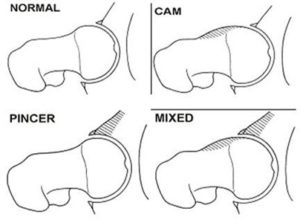
In any event, if you feel like you have symptoms of FAI or impingement at the ankle, do not push through this movement. You should communicate with your coach and get assessed or referred out to see what you can do about these issues.
Now, if bony limitations don’t inhibit you from doing this movement, we need to identify how we can improve position and be successful with the pistol. As mentioned above, each element of the 3-headed dragon; mobility, stability/balance and strength need to be identified.
Mobility:
If you do not have the mobility required to get into a good position (this can stem from ankle dorsiflexion and/or hip “tightness”) then regardless for how strong you are or how well you can balance, this is the area we need to improve on. An easy ankle mobility test is the “ankle break test” where you test your ability to flex at your ankle against a wall. We want to see 3+ inches of dorsiflexion and a “stretch” like feeling in the back of the calf, not a pinch in the front of the ankle. In addition, we want to see similar range of motion (ROM) bilaterally or side to side. If one side is greater than the other, we need to address the unilateral mobility imbalance. This can create compensation patterns in not just the pistol squat but in normal squat or other movement patterns. As it pertain to hip flexor/quad tightness, this can cause forward lean (as can ankle mobility issues) and improper weight distribution causing balance issues. Soft tissue work to hip flexors, active flexibility work and movement patterning (actually practicing the pistol in a good position) can assist in improving mobility. A test for this is to squat with a plate or lift under the heal and try to perform the pistol. If you can get into a much better position, the limitation might be at the ankle, if not, it could derive from the hips.
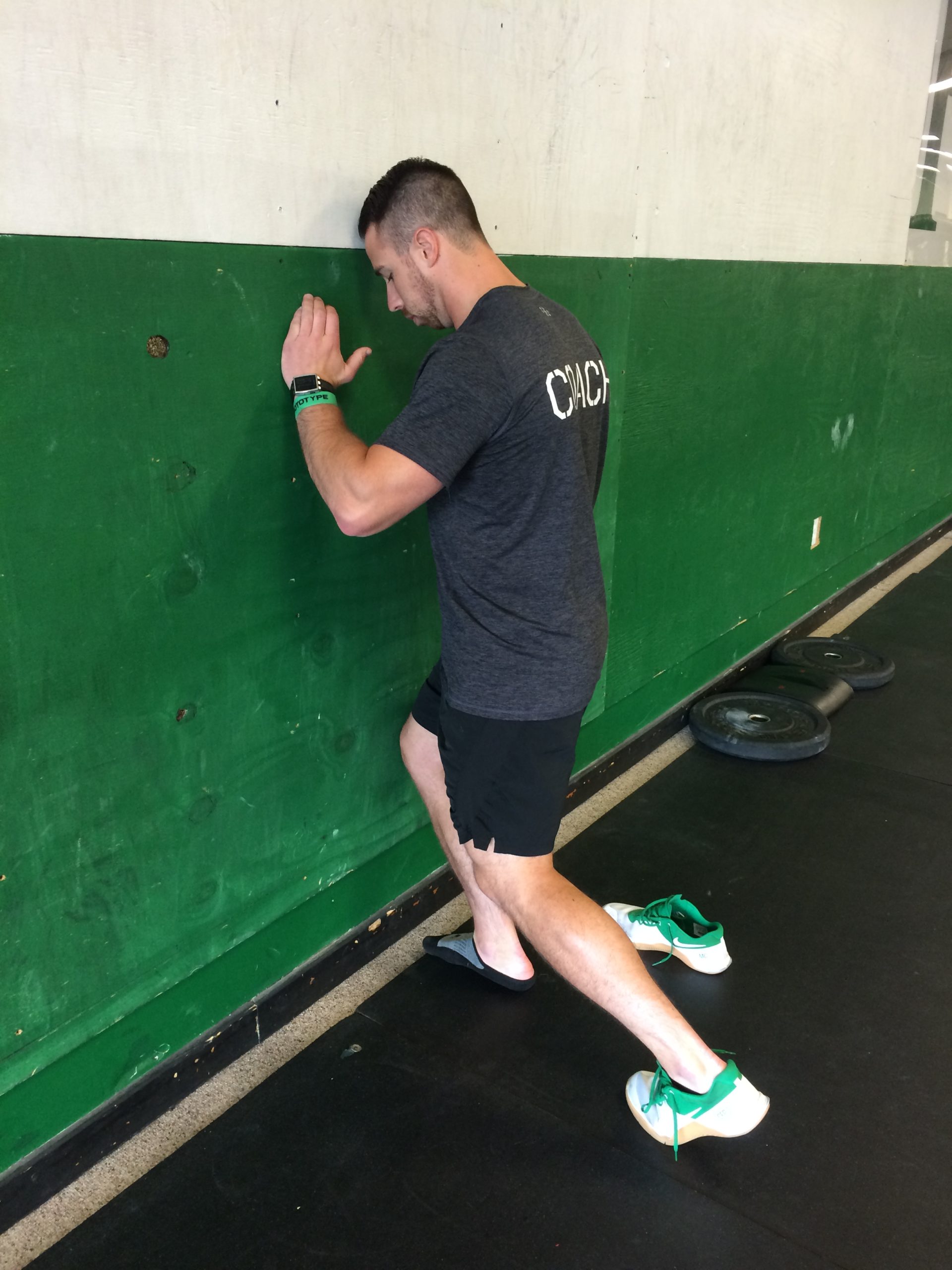

(Ankle break test)
Stability/balance:
From the stability side of things, if you can get to the bottom of a pistol squat (have the proper mobility; maintaining upright torso, foot flat on the floor, opposing leg elevated) but don’t feel stable or balanced in the bottom, then creating “tension” is essential to performing this moment with efficiency. A couple strategies here is using the same side hand to grasp the elevated leg (see picture below). This will allow you to “sit back” in the pistol and maintain an upright torso to keep you in a more balanced position. It will also take the strain off of those quad/hip flexor muscles which are working diligently to keep that leg elevated. Another strategy from a balance and stability perspective is creating tension through the midline (bracing) and tension through the upper body by squeezing your fists as hard as you can. This technique is referred by Gray Cook as “irridation” where creating upper body tension and recruiting this musculature gets the nervous system going which helps facilitate stability. So when you need to balance, think that you have an empty water bottle in each hand and you are trying to squeeze the life out of it. It will make a big difference.
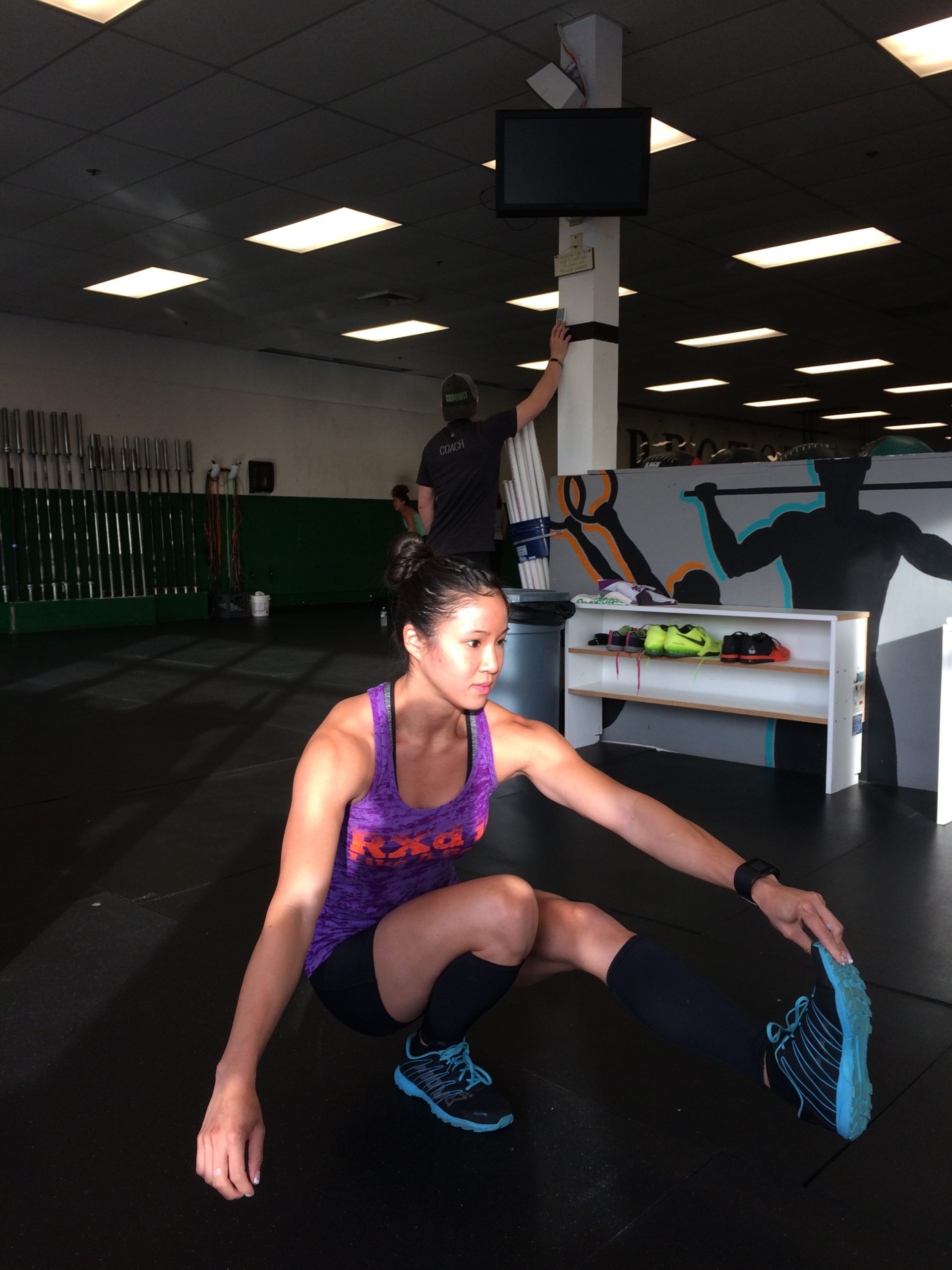
(Liz at the bottom of the pistol squat and grabbing the uninvolved foot)

Strength:
And last we arrive to the area that we can improve dramatically over time with proper movement and progression. If you have the mobility and stability in the pistol squat, don’t get too frustrated, you are almost there! The challenge for you is that you might not have the strength to press yourself up from the bottom of the pistol to a standing position. You are essentially lifting your entire body with one leg; that requires some strength. The best way to improve this is to practice perfect reps of the pistol squat with some of the regression movements I will go over. In addition, another great strategy is to work the eccentric phase of the pistol. So “eccentric” loading refers to loading the muscle while it is lengthening or the “negative”. It has been shown that your body can tolerate up to 1.75 times more weight eccentrically than it can concentrically (shortening of muscle). This stress will cause adaptation and make it easier for you to eventually stand that pistol squat up!
How to scale for you:
If you don’t have a pistol squat and fall under the 3-headed dragon somewhere, here are some modifications to help you improve your pistol squat while allowing you to get the most out of your workout. I have outlined these movements as they pertain to the different limitations of the 3-headed dragon (mobility, stability/balance and strength):
Mobility:
- Box assisted pistols – (pistol on the side of a box. Vary height depending on difficulty. Stand on the side of the box, use your hand to assist you down while getting into a good position. The foot on the ground is closest to the box. Use your upper body as needed to assist you)
- Ring/TRX assisted pistols -(facing the rings/TRX and grab the handle on the same side leg that is on the ground. Get into a good bottom position and utilize your upper body as needed
- Partial pistol box squats- (go to the ROM you can get to but from a partial squat or above parallel. Your focus should be on keeping your foot flat, knee tracking in line with toes and staying upright)
- Single leg step ups (from side of box)-(from the side of a box, preferably keeping your knee higher than the crease of your hip for full ROM, step up while keeping uninvolved leg off the box. Control slowly back down while keeping foot flat and torso in good position. Try not to “bounce” off uninvolved leg from floor so you can isolate the involved leg on the box. Challenge range of motion (ROM) here)
Stability/Balance:
- Banded ankle assisted pistols (set up a super band on a fix/grounded structure such as a rig. Put one leg in the band and put the band around the back of your ankle, step back so it’s under good tension and perform the pistol. I would use this to skill balance or a prep exercise, not something to use while conditioning)
(See mobility exercises and challenge stability while increasing the range of motion of each of those movements as stability progressions).
Strength:
- Eccentric pistols (perform a 4-6 second count down to the bottom of a pistol squat, stand up with both feet and repeat for sets of 3-6 reps)
- Bulgarian Split Squats (also known as rear elevated split squats; great for developing single leg strength)
- Single leg step ups (see mobility; do these from the side of the box and load them up with dumbbell or Kettlebells in a goblet position to changing midline and help assist with torso position)
Stay tuned for my next article on these challenging movements you’ll find in CrossFit workout classes!!




 (Liz at the bottom of the pistol squat and grabbing the uninvolved foot)
(Liz at the bottom of the pistol squat and grabbing the uninvolved foot)

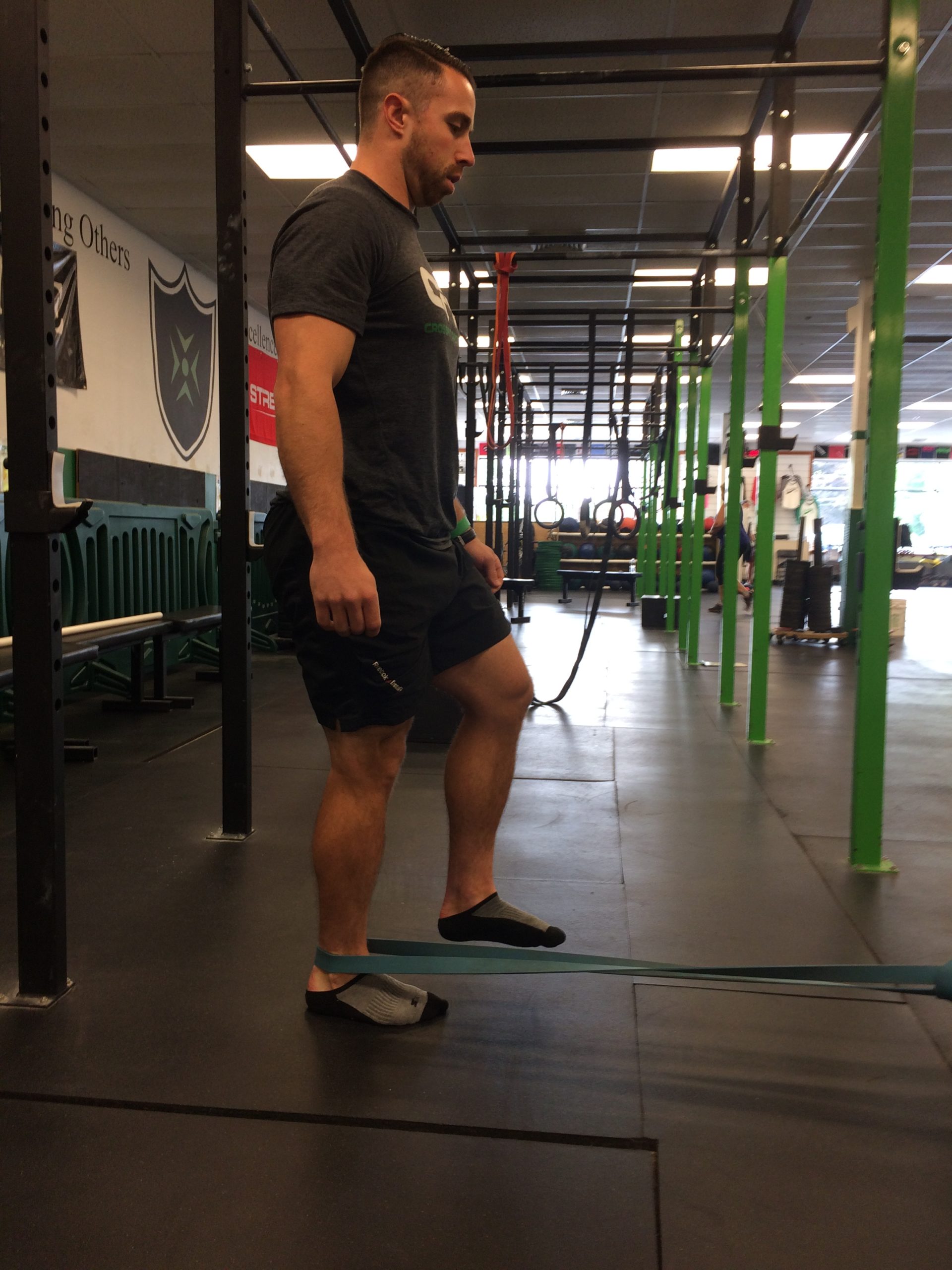
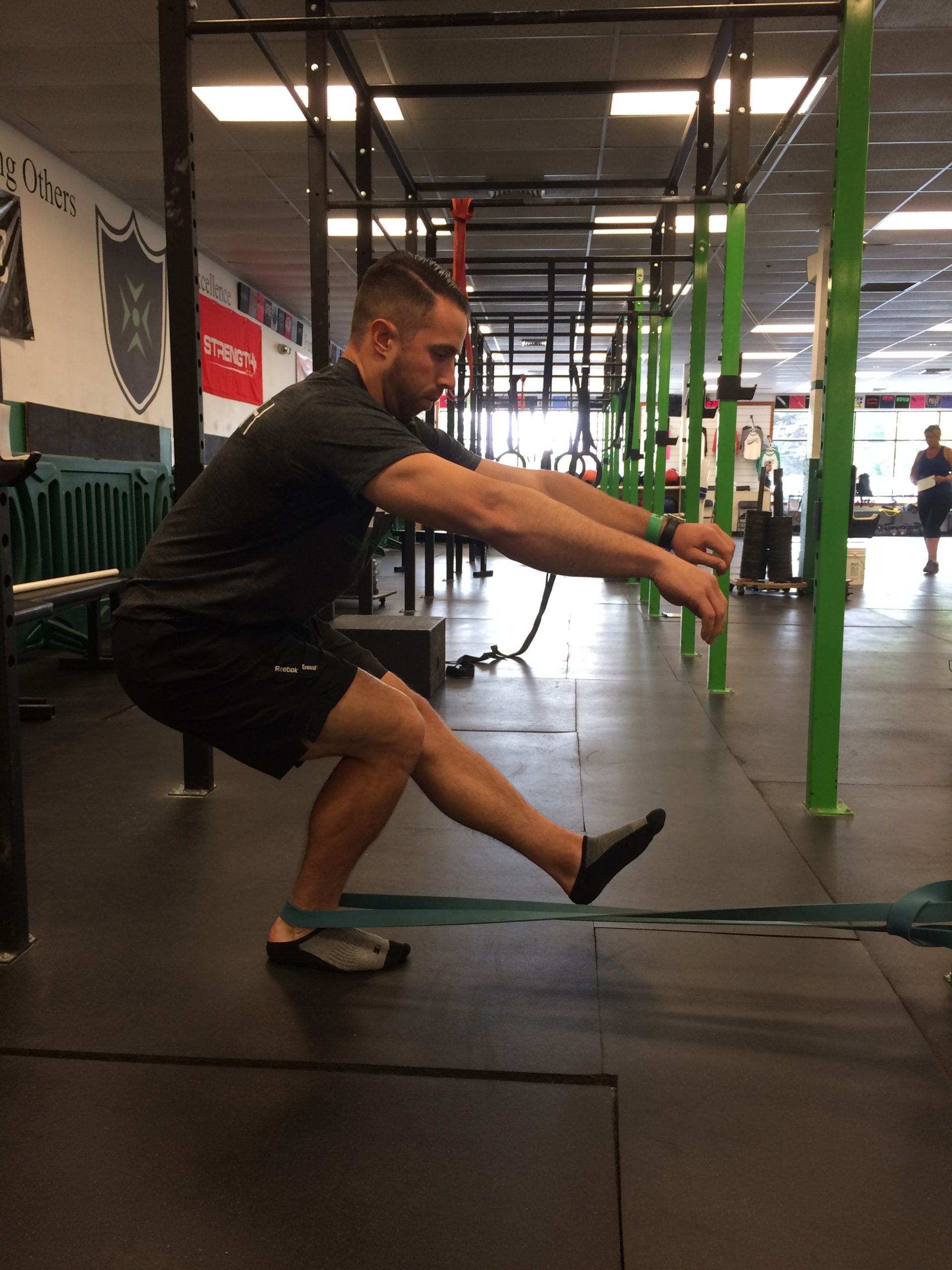 (Banded ankle assisted pistol exercise)
(Banded ankle assisted pistol exercise).jpg)
